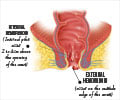Review the side-effects of Cinchocaine as documented in medical literature. The term "side effects" refers to unintended effects that can occur as a result of taking the medication. In majority of the instances these side-effects are mild and easily tolerable, however sometimes they can be more severe and can be detrimental.
If the side effects are not tolerable adjusting the dosage or switching to a different medication can help to manage or overcome side effects. If you have any doubts or questions, we recommend seeking advice from your doctor or pharmacist. Side effects of cinchocaine occur if the medicine gets absorbed into the bloodstream in conditions when it is used in excess, or when it is used on cuts or when it is applied over large skin areas.
It has been reported to cause severe adverse reactions if ingested by mistake,
Skin: allergic contact dermatitis, swelling of the face, lips, tongue, or throat
Cardiovascular disorder: Arrhythmias (fast or irregular heartbeats), cardiac arrest or failure
Neurological disorder: Seizures
Opthamological disorder: Blurred vision
Accidental ingestion of the drug in any of its formulations, especially by children may be harmful and sometimes fatal.
If the side effects are not tolerable adjusting the dosage or switching to a different medication can help to manage or overcome side effects. If you have any doubts or questions, we recommend seeking advice from your doctor or pharmacist. Side effects of cinchocaine occur if the medicine gets absorbed into the bloodstream in conditions when it is used in excess, or when it is used on cuts or when it is applied over large skin areas.
It has been reported to cause severe adverse reactions if ingested by mistake,
Skin: allergic contact dermatitis, swelling of the face, lips, tongue, or throat
Cardiovascular disorder: Arrhythmias (fast or irregular heartbeats), cardiac arrest or failure
Neurological disorder: Seizures
Opthamological disorder: Blurred vision
Other Precautions :
Do not rub your eye after applying the drug.Accidental ingestion of the drug in any of its formulations, especially by children may be harmful and sometimes fatal.










